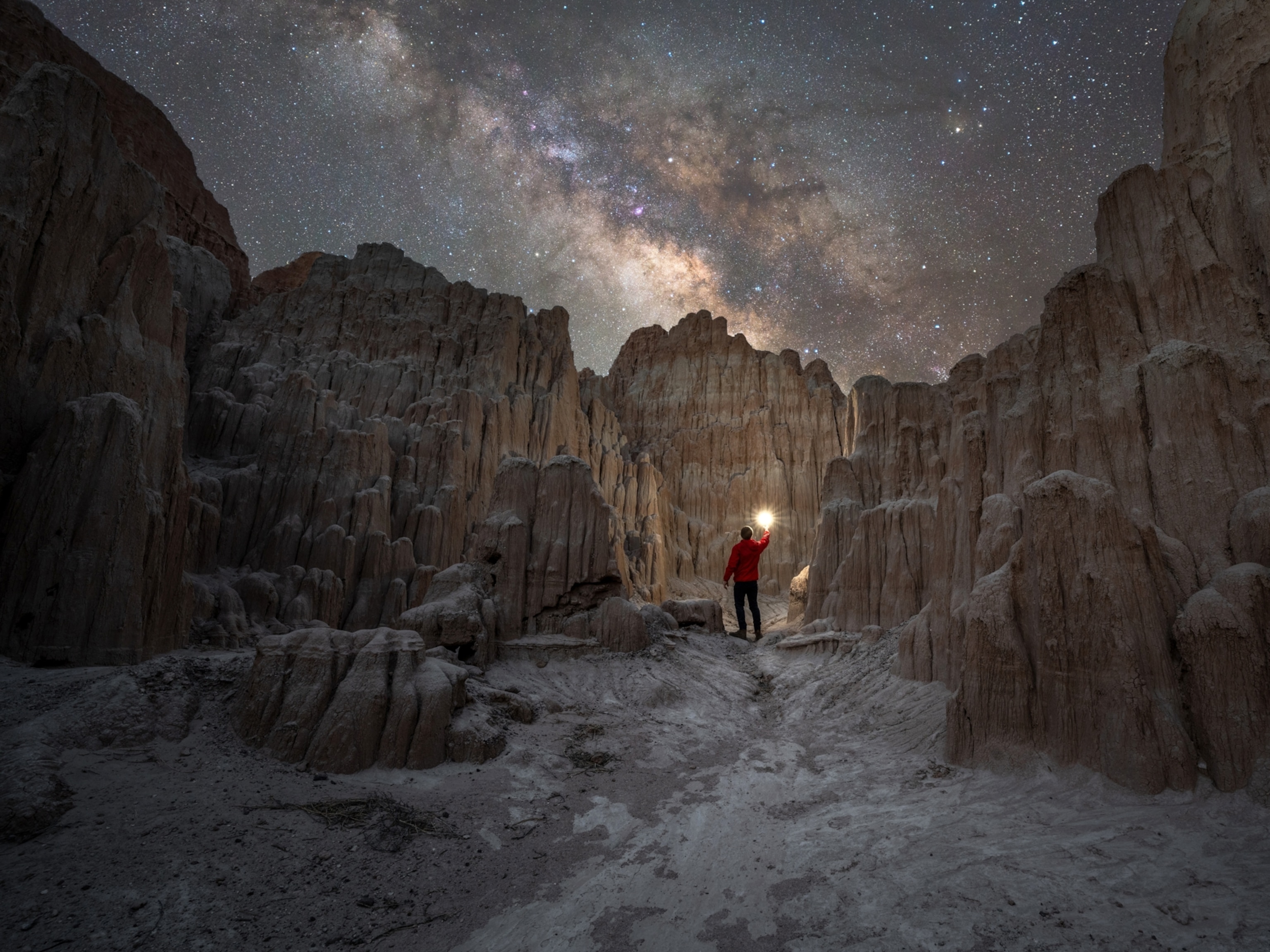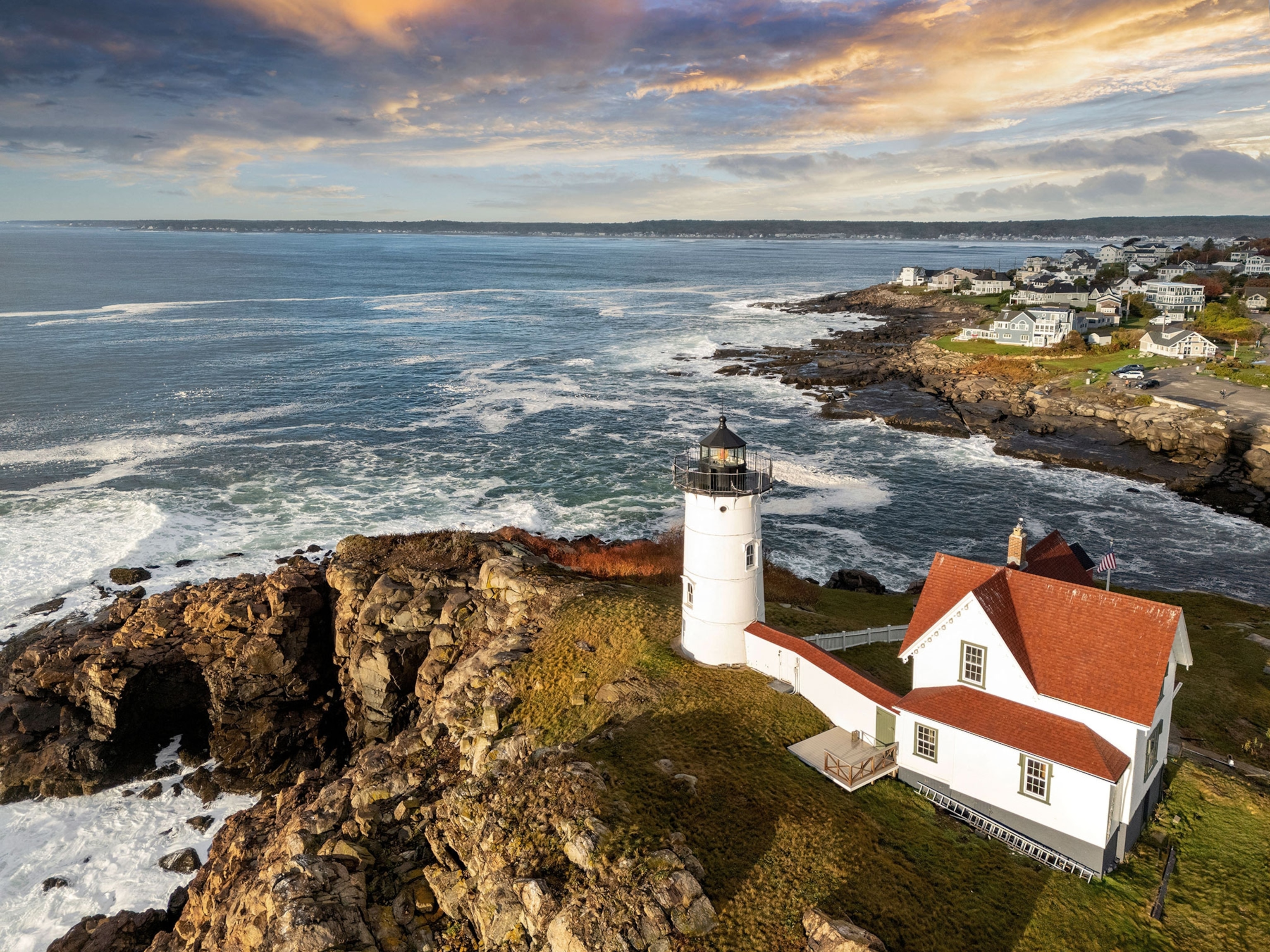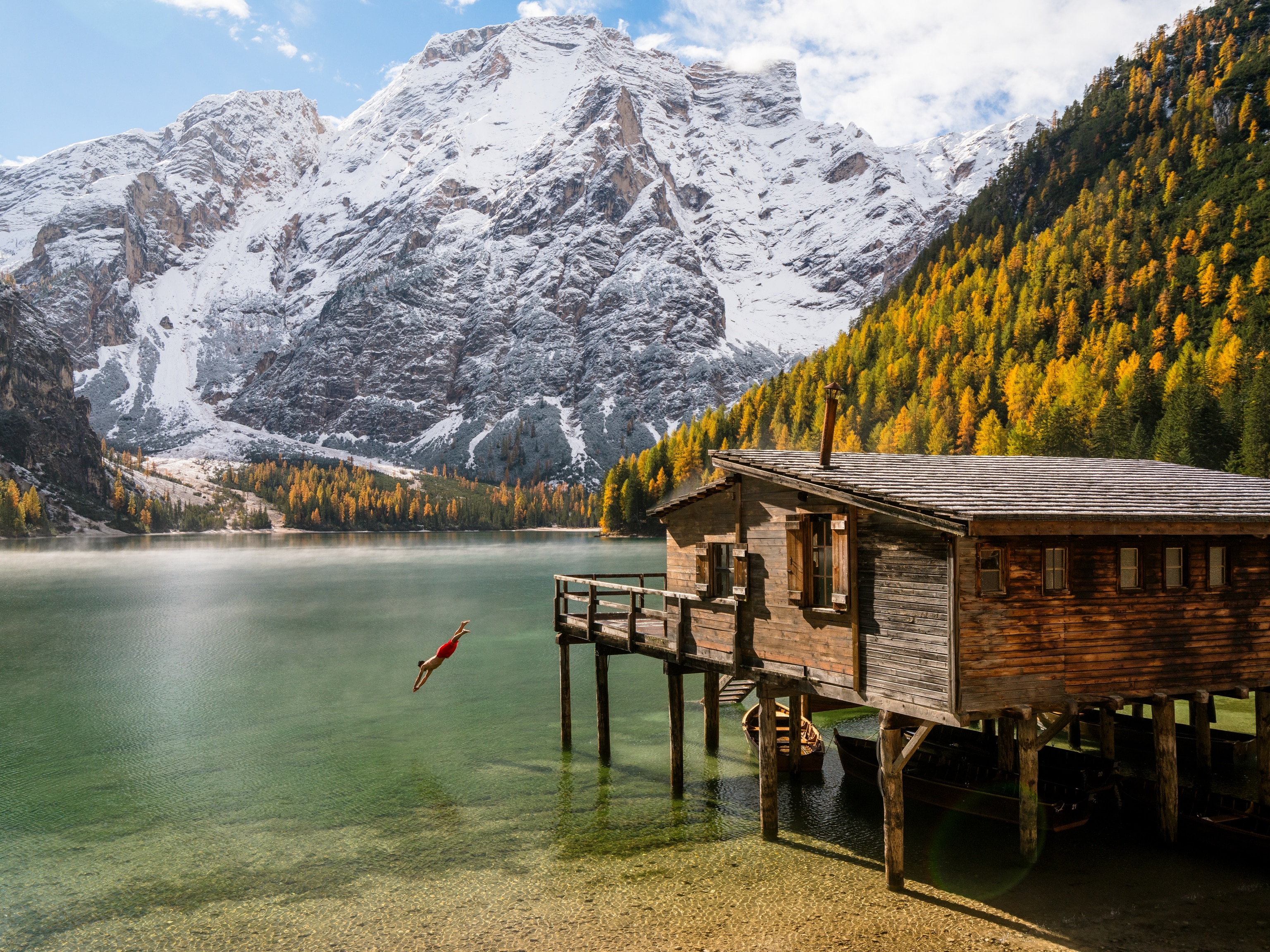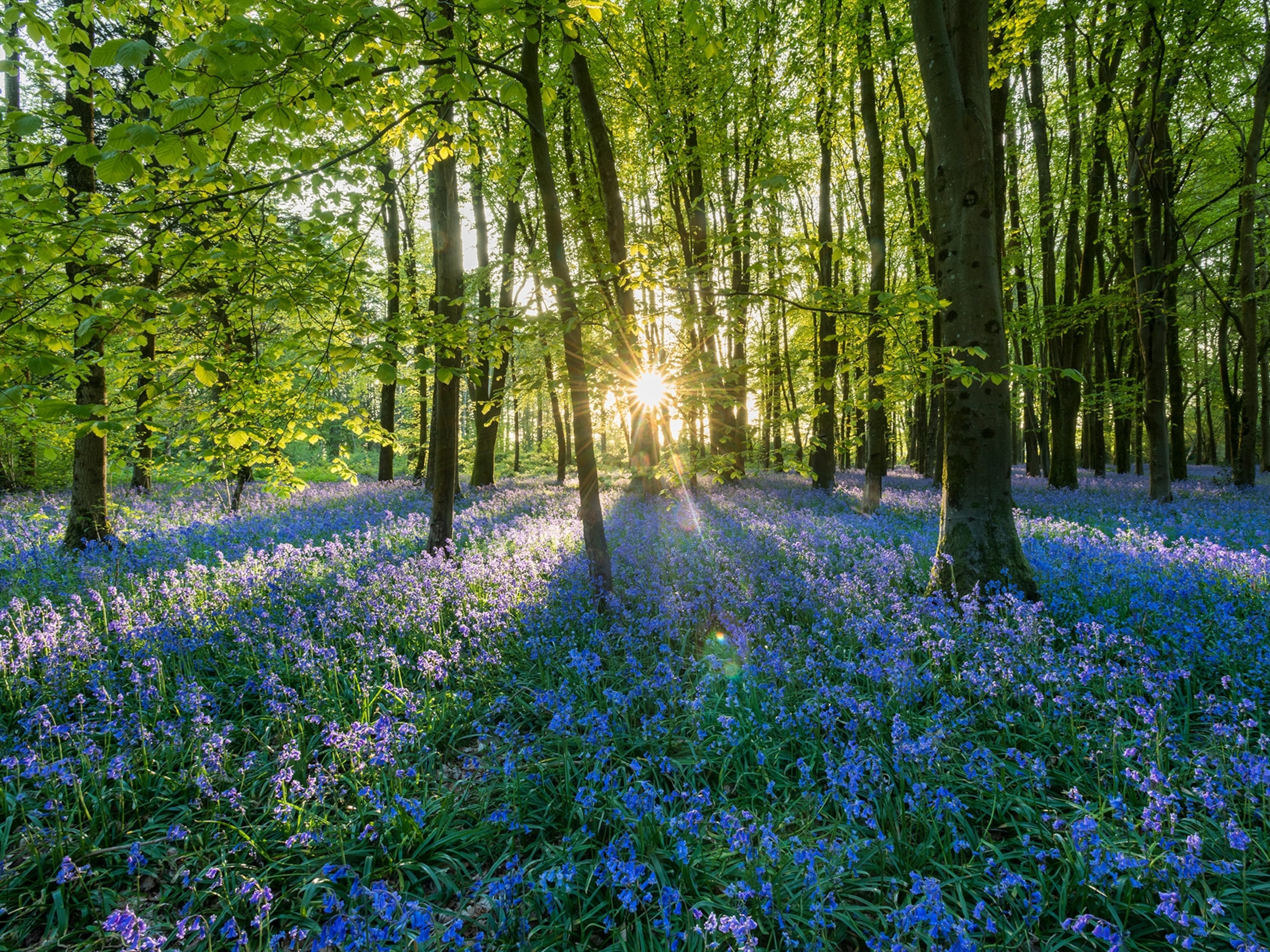Where to go stargazing and glamping in southern Utah
With its national parks, slot canyons, and sand dunes, this region of Utah is as geographically diverse as it is awe-inspiring.
The earliest human evidence in southern Utah traces back over 10,000 years, and while a journey here doesn’t exactly feel like traveling back to the Paleolithic period, it can feel like visiting another planet. From the sandstone cliffs of Zion National Park, to the orange sand dunes of Coral Pink Sand Dunes State Park, to the towering hoodoos of Bryce Canyon—southern Utah is an exercise in shape and color. In Grand Staircase-Escalante National Monument, you can squeeze your way through slot canyons by day and marvel at the Milky Way by night—the state boasts the highest concentration of certified International Dark Sky Places in the country.
(These are the 10 most popular national parks)
What to do
Hike through the hoodoos of Bryce Canyon
Each year, Bryce Canyon National Park attracts upwards of two million visitors to marvel at its natural amphitheaters and hoodoos (the park has the highest concentration in the world). Stretching over 35,000 acres, the park ranges from red rock canyon terrain to high altitude alpine forests offering opportunities to hike, ski, horseback ride, and camp.
For a day visit, the Navajo Loop Trail is a moderately easy 1.5-mile hike through towering limestone, passing Thor’s Hammer, a hoodoo famous for its hammer shape. The two to three-hour Queen’s Garden and Navajo Combination Loop is the most popular trail for its variety—from sweeping panoramic vistas to tight switchbacks through canyon walls. If hoodoos are your main interest, opt for the longer Peekaboo Loop which boasts the most of any trail.
Sand surf in Coral Pink Sand Dunes State Park
As the only sand dune on the Colorado Plateau, it’s easy to feel like you’ve traveled far outside the country when you’re in Coral Pink Sand Dunes State Park. Adrenaline junkies can embark on a six-hour rappelling adventure through Rock Canyon, while those seeking relaxation can opt for a sunset UTV ride with stargazing and s’mores.
Choose your own adventure in Zion National Park
With its breathtaking red rock canyons, and diversity of flora and fauna (upwards of 78 mammal species and 1000 plant species), it’s no wonder Zion National Park attracted approximately five million visitors last year. The Zion Canyon Shuttle System is a convenient resource for accessing trailheads. Get off at the last stop for The Narrows, the park’s most popular trail that winds up the Virgin River (be prepared to get wet) through a picturesque slot canyon. For those looking to stay dry, Riverside Walk is an easy 1.5-mile paved path through towering cottonwood trees and sandstone cliffs. Another gentler option is to take in landmarks from Zion Canyon Scenic Drive like the three peaks known as the Court of the Patriarchs, and the Great White Throne. Thrill-seekers can brave the narrow, cliffside paths of Angel’s Landing trail for views 1,500 feet above Zion Canyon (permit required).
Squeeze through slot canyons
If you’re looking to canyoneer (which typically involves hiking, scrambling, and/or rappelling through canyons), head to Escalante, where flash floods, erosion, and geological uplift have carved narrow pathways through steep sedimentary rock. Excursions of Escalante guides guests through Escalante’s least-frequented slot canyons, which contain no shortage of archaeological treasures and photogenic rock formations.
Marvel at the colors of Kodachrome Basin State Park
Colorful Entrada sandstone formed over 100 million years make Kodachrome Basin State Park a wonderland of red spires and vibrant orange cliffs not to be missed. The National Geographic Society was so impressed with the park’s photogenic colors on their expedition, they asked Kodak to name it Kodachrome, after the color film. You can still view the distinctive sand pipes that inspired the name today, on one of the park’s six trails. The moderate Panorama Trail offers the greatest variety, from panoramic lookouts to quirky rock formations like the Hat Shop and Ballerina Spire. Whether you choose the three-mile or six-mile loop, don’t miss the Secret Passage for a red rock ravine with breathtaking cliff walls offering shade from the sun.

Stargaze the dark skies
Home to over 20 certified International Dark Sky Places, Utah’s vast skies transform into a canvas of constellations by nightfall. State parks run occasional stargazing tours, and ranger-led tours run year-round in Bryce Canyon, which also hosts their annual Astronomy Festival in June. Capitol Reef National Park runs stargazing tours from June to October, and their Heritage StarFest in September. Private outfitters like Zion Jeep Tours and Stargazing Zion offer relaxing night sky viewing tours complete with lounge chairs, binoculars, and telescopes.
(How to experience Utah like a local)
Where to eat
On a discreet pull-off from Scenic Highway 12 lies one of the state’s most treasured restaurants—Hell’s Backbone Grill & Farm. Buddhist principles and a sustainability ethos inform James Beard-recognized creations made with ingredients from their farm, like a soup inspired by the Native American agricultural trifecta with black beans, butternut squash, and corn posole.
If you’re looking to eat near Bryce Canyon, head to Rustler’s Restaurant for a down-home country feel and all-day comfort food to match. You’ll find fancier fare a few minutes’ drive away at Stone Hearth Grill, where comforting dishes like chicken Florentine and a vegan take on poblano relleno are served on a tranquil patio with views of Powell Point.
Near Zion National Park, most restaurants are concentrated in the town of Springdale. For breakfast fuel, Deep Creek Coffee Co makes bright acai bowls, hearty sandwiches, and inventive drinks. For filling apres-hike fare, head to Oscar's Cafe for Mexican-American favorites like enchiladas, burgers, and burritos the size of your head. For classic pub food served with a local brew, Zion Canyon Brew Pub is another popular option with live music and a patio overlooking Watchman Mountain. Also near the park entrance is Anthera, where you’ll find globally inspired plates like shrimp tostadas and Thai coconut curry. It's worth driving five minutes down Zion Canyon Blvd to Wild Thyme Cafe for colorful southwestern-Cajun dishes like green chili penne and pistachio chicken with poblano cream sauce.

Where to stay
Near Zion National Park, you’ll find most hotels in St. George, Springdale, and Cedar City. But for something more experiential, Zion Wildflower Resort is one of the newer glamping resorts in the area offering a variety of accommodations. Set in the desert with views of the surrounding red rock mountains, the resort’s accommodations include glamping tents, covered wagons, and bungalows, all with optional air-conditioning. A pool, fire pit (with complimentary s’mores), and on-site games give the resort a convivial feel.
Under Canvas is another glamping option with camps in Zion, Bryce Canyon, and Lake Powell. Safari-inspired canvas tents can sleep up to seven people and feature an ensuite bathroom, private deck, and wood burning stove. Each camp celebrates their Dark Sky certifications with extensive celestial programming, including star-bathing meditations and constellation parties.
For a more secluded glamping experience, Escalante Yurts offers five-star amenities like an ensuite bathroom, fireplace, heating and air conditioning, and kitchenette or full kitchen. Complimentary breakfast is included and each spacious yurt has a deck with an outdoor grill. The resort’s proximity to Capitol Reef National Park and Bryce Canyon, make it the ideal launching pad for exploring.
(You’re never too old for summer camp—these 8 getaways prove it)







